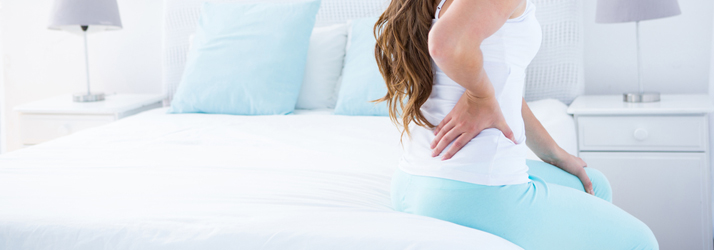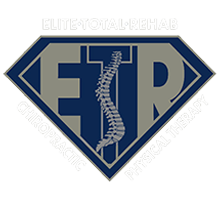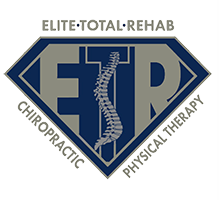Common Lower Back Complaints in Northwest Chicago IL

Low back pain in Northwest Chicago IL can be caused by many things. It is important to isolate the source of pain, the duration, and the intensity of your symptoms.
Lower Back pain in Northwest Chicago IL
Most low back pain is triggered by some combination of overuse, muscle strain, and injury to the muscles, ligaments, and discs that support the spine. Over time muscle strain can lead to an overall imbalance in the spinal structure. This leads to a constant tension on the muscles, ligaments, bones, and discs, making the back more prone to injury or re-injury. Proper exercises, stretches, and chiropractic treatment can help to reduce low back pain and help prevent future episodes. Whether you step off a curb the wrong way, injure yourself lifting something heavy at work, or even injure yourself in a motor vehicle accident treatment can help you.
It is important to differentiate Neuromusculoskeletal (somatic and neuropathic) pain (pain from muscles, joints, ligaments, tendons, bones, nerves, and discs) from visceral pain (pain referred from organs). A physical examination and a thorough history of the problem will give the clinician a better understanding of what is causing the symptoms. Diagnostic testing in the form of x-ray, MRIs, urinalysis, and even blood draws may be required in cases that are more complex. If you experience low back pain it is important to have it evaluated and treated to help improve your quality of life and to help prevent future episodes through education and exercises that are available to you.
Lumbar Disc Herniations/Bulges
There are different classifications of disc pathology. The main two are herniations and bulges. Of the two, herniations are more severe and require a longer healing process. The disc itself is comprised of a nuclear material (the Nucleus pulposus) and the outer fibers (the annulus fibrosus). An easier way to explain the structure is with a popular American staple, the jelly doughnut. The inside/nucleus of the disc has a pliable/squishy substance similar to jelly. The outer portion of the disc, the annulus, has a more rigid structure like the cake in the doughnut.
In the human body, this substance is more like a grizzle from a steak. When a disc herniates, tears in the annular fibers are formed and the nucleus (jelly) passes through this structure and extends past the outermost fibers. When this herniation is severe enough it can compress the spinal nerve and cause an array of problems that can extend into the lower extremity (radiculopathy /sciatica). A disc bulge is less severe, however, since the disc is a pain receptor structure pain is felt. With a disc bulge tears in the outer fibers are present and the nucleus extends into the annular fibers. This causes an inflammatory response and the disc “bulges” taking on a physiological different shape.
Lumbar Facet Syndrome
Facet syndrome is a condition, which involves the posterior aspects of the vertebral bodies known as the facets. The facet joints glide upon one another when the joints are moved. Irritation to these joints may come in the form of joint dysfunction, muscle tension, increased weight due to obesity/pregnancy, and osteoarthritis.
Lumbar Joint Dysfunction
Joint dysfunction is a loss in joint motion. The body is designed to have certain amounts of motion at each vertebral level. For example, the lumbar spine has five bones in its region. If a loss in joint motion is found between the L3 and L4 levels the joints above and below will move more freely (hyper-mobile) to compensate for the loss of motion between the two levels. This loss is joint motion (hypomobility) if not treated may predispose the segment to advancement in arthritic changes.
Lumbar Radiculopathy
Radiculopathy is pain felt in an extremity associated with nerve irritation usually due to disc pathology. Nerves can also be affected by both muscle spasms and joint dysfunction or a combination of both. When a patient experiences radiculopathy they will usually feel numbness, tingling, and or burning in the lower extremity. If symptoms persist and it goes untreated the patient may then have developed weakness in the muscle and a slow or diminished reflex. Over time this can become a serious problem and should be evaluated immediately and taken seriously. Nervous tissue once compromised has little to no chance of recovering to its initial state.
Lumbar Spinal Stenosis
Spinal stenosis involves encroachment upon the spinal cord. Disorders that have been known to cause this condition: Disc herniations/bulges, advanced osteoarthritis, and spinal cord masses/tumors. Spinal stenosis when left untreated can cause severe disorders to the lower extremities (Radiculopathy) and symptoms distal or below the encroachment.
Lumbar Sprain/Strain
A lumbar sprain/strain involves the joint, tendon, ligament, and muscles of the lumbar spine. This condition can come in an array of mechanisms, such as repetitive use, over exertion with certain exercises/movements, motor vehicle accidents, and even from an insidious onset such as “I woke up and my low back hurt”.
Piriformis Syndrome
Piriformis syndrome can be mistaken for lumbar radiculopathy if not evaluated properly. Both conditions create a localized low back/buttock pain with pain in the lower extremity. Orthopedic and diagnostic testing can differentiate these two conditions, which have different prognoses and treatment protocols. Piriformis syndrome is diagnosed with a contracture in the piriformis muscle (a muscle located in the buttocks) that irritates or entraps the sciatic nerve under the tight muscle.
Hip Pain
People often locate hip pain pointing over the sacroiliac joint (the joint between the sacrum/base of the spine and the iliac crest/a portion of the pelvis). The key to treating hip pain is accurate diagnosis localizing it.
The hip joint is located over the lateral side of your leg where the femoral head, the top of your leg bone connects to the acetabulum, another bone of the pelvis. The joint is considered a ball-and-socket and is very stable. Localized hip pain, pain over the joint, may be due to tendonitis (inflammation of the tendons) or bursitis (inflammation of the bursa-a fluid filled sac to help lubricate the joint) from surrounding tissues. It is important to evaluate this properly to rule out a referral pain from other structures in the low back such as the sacroiliac joint which has a tendency to refer pain into the hip and lateral thigh. Arthritis in the aging population is a common site for the hip.
An x-ray or MRI may be required to see the extent of arthritic changes and properly diagnose the complaint. Those who have had recent trauma to the area and have had prolonged pain may be evaluated immediately with a MRI to evaluate essential vascular structures, especially in the adolescent population.
Lower Back Scoliosis
Scoliosis is an abnormal curvature of the spine. There are several types of scoliosis: idiopathic, congenital, neuromuscular, and degenerative. Scoliosis most commonly affects the thoracic and thoracolumbar spine. Residual curves may be present in the lumbar spine. This curve may and can affect the lower lumbar spine at the area where it articulates with the sacrum thus affecting the sacroiliac joints.
Spasm of Lumbar Spinal Muscles
Muscles in the lumbar spine become tight and people often refer to them as “knots”. These knots are actually called “trigger points”. Trigger points usually follow a pattern and can be very painful in their active state. Muscles that can be affected in this region include:
- Quadratus Lumborum
- Lumbar Erector Muscle
- Lower Latissimus Muscle
- Gluteus Maximus/Medius/Minimus
- Piriformis
Monday
9:00am - 6:00pm
Tuesday
9:00am - 6:00pm
Wednesday
9:00am - 6:00pm
Thursday
9:00am - 6:00pm
Friday
9:00am - 6:00pm
Saturday
By Appointment
Sunday
Closed
Elite Total Rehab
7008 W Higgins Ave
Chicago, IL 60656



